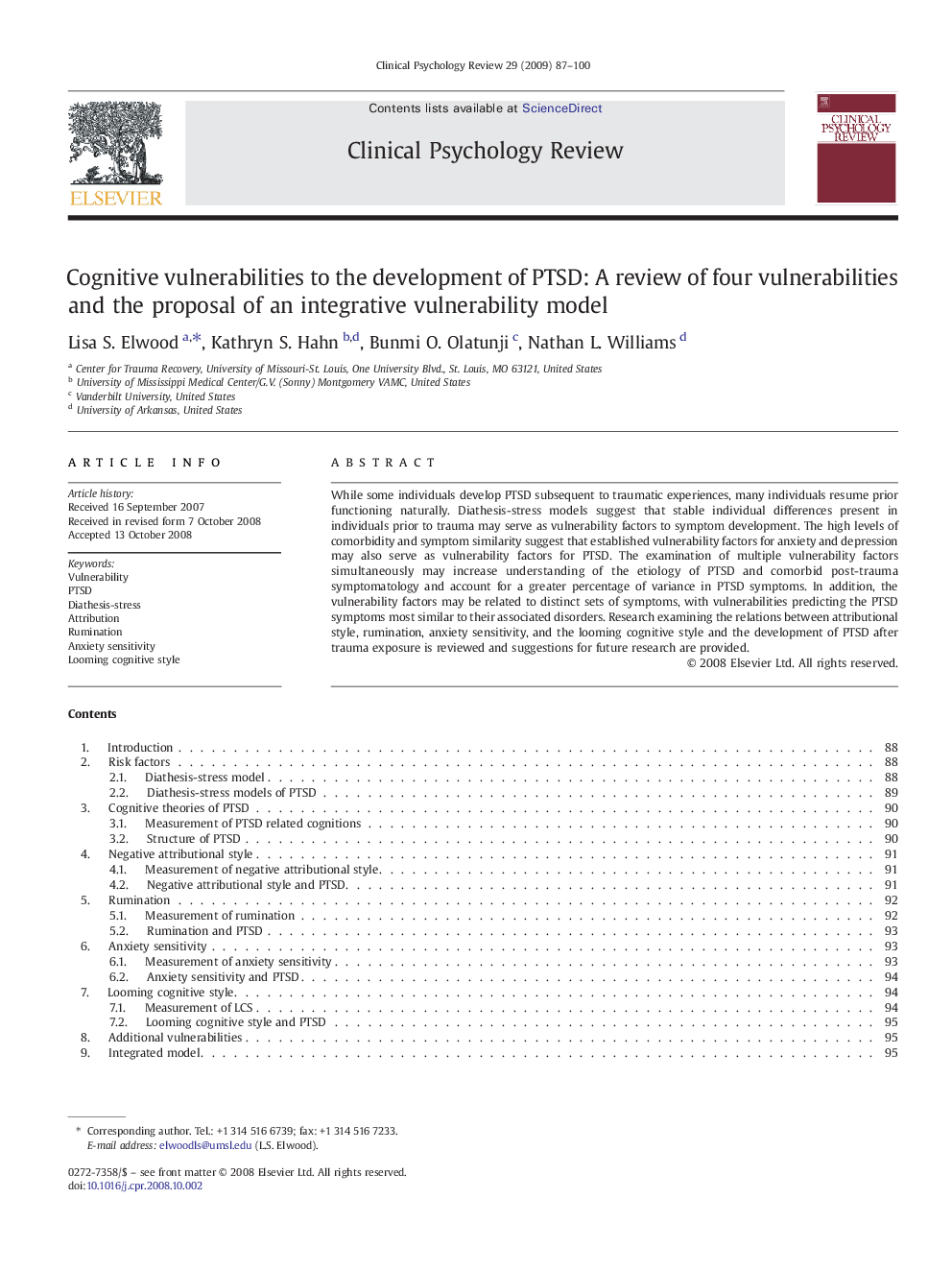| Article ID | Journal | Published Year | Pages | File Type |
|---|---|---|---|---|
| 903994 | Clinical Psychology Review | 2009 | 14 Pages |
While some individuals develop PTSD subsequent to traumatic experiences, many individuals resume prior functioning naturally. Diathesis-stress models suggest that stable individual differences present in individuals prior to trauma may serve as vulnerability factors to symptom development. The high levels of comorbidity and symptom similarity suggest that established vulnerability factors for anxiety and depression may also serve as vulnerability factors for PTSD. The examination of multiple vulnerability factors simultaneously may increase understanding of the etiology of PTSD and comorbid post-trauma symptomatology and account for a greater percentage of variance in PTSD symptoms. In addition, the vulnerability factors may be related to distinct sets of symptoms, with vulnerabilities predicting the PTSD symptoms most similar to their associated disorders. Research examining the relations between attributional style, rumination, anxiety sensitivity, and the looming cognitive style and the development of PTSD after trauma exposure is reviewed and suggestions for future research are provided.
